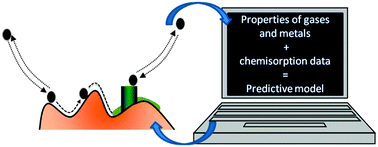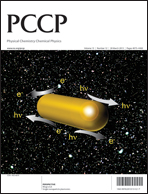Predicting adsorption on metals: simple yet effective descriptors for surface catalysis†
Abstract
We present a simple and efficient model for predicting the adsorption of molecules on metal surfaces. This heuristic model uses six descriptors for each metal (number of d-electrons, surface energy, first ionization potential and atomic radius, volume and mass) and three for each adsorptive (HOMO–LUMO energy gap, molecular volume and mass). Strikingly, despite its simplicity and low computational cost, this model predicts well the chemisorption of a range of adsorptives (H2, HO˙, N2, CO, NO, O2,


 Please wait while we load your content...
Please wait while we load your content...